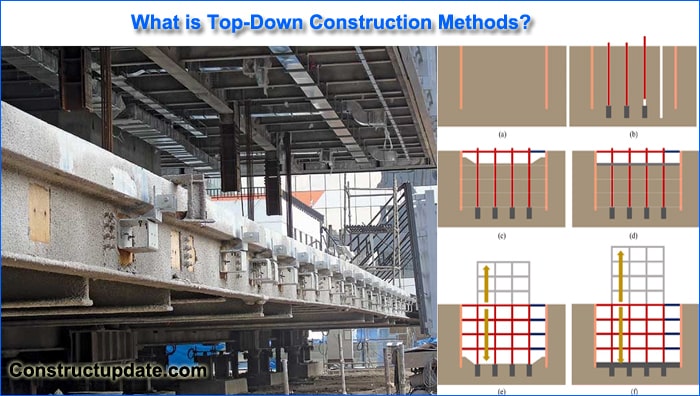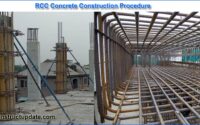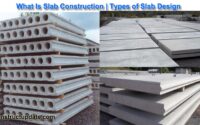What is Top-Down Construction | Top Down Construction Methods | Advantages and Disadvantages
What is Top-Down Construction Methods?
When the retaining wall is cast in a top-down sequence, the inside permanent structure is used as temporary propping. For the purpose of acting as horizontal frames for wall support as the excavation moves forward, the higher-level slabs are cast before the lower-level slabs.
Tall buildings with deep basements and underground constructions like parking lots, underpasses, and subway stations are the two principal types of urban structures for which the top-down technique is applied. The technique has been applied to deep excavation projects where soil movements needed to be kept to a minimum but tieback or anchor installation was not an option. It might be possible to shorten the entire building period.
The installation of retaining walls is followed by the placement of the load-bearing components that will support the eventual superstructure. Before any excavation is done, the basement columns, which are normally steel beams, are built and placed on the load-bearing components.
Typically, concrete piles or diaphragm wall panels are used as these load-bearing components.

Top-down Construction Sequence
Following is the standard top-down construction sequence:
- Put the retaining wall in place (usually a diaphragm wall).
- Create piles. Where the piles are built, install the steel columns.
- Start the first phase of the excavation.
- First basement level floor slab should be cast with an opening to allow machinery to be lowered to excavate level below and to remove excavation waste.
- Cast the floor slab for the second basement level as you move on to the second stage of excavation.
- Till the desired depth is obtained, repeat the same steps.
- Build the slab for the foundation. Finish the basement.
- Till the superstructure is complete, keep building.
The top-down construction method essentially calls for two primary structural components in terms of design and construction. To support the weight of the construction project and serve as a component of the bracing system, columns with suitable capacity must be pre-founded in bored piles or diaphragm wall panels.
So that basement floor slabs can be used as lateral bracing, excavation for the basement must be done with the support of a permanent retaining wall. A retaining wall made of a diaphragm that has been sufficiently embedded in hard soil layers is frequently employed.
A top-down approach calls for ventilation for the work underground beneath permanent slabs as well as access for the delivery of materials and the disposal of soil, which may be through the ground floor and substructure slabs. Safe working practices and techniques for excavation and substructure construction that are compatible with the available area and restricted access should also be taken into account.
Top Down Construction Advantages
Not every project is a good fit for the top-down construction approach. However, the following benefits are available to projects that use this methodology:
It enables foundations to be built at ground level for basement applications. First, the piling rig does not need to be demobilised and re-mobilized between the building of the basement wall and the foundation construction, which is a benefit if piles are recommended as the foundation system. This can speed up the piling procedure, particularly if access to piling rigs in your area is limited. Additionally, it eliminates the requirement for protracted temporary soil ramps and the crane-assisted dropping of the piling equipment into the basement hole that has been excavated.
A basement built from the top down offers the general public better protection in terms of safety. The built-in ground floor slab acts as a protection lid before the basement excavation starts, limiting unauthorised entry to the basement.
Having a lid over the basement excavation implies that excavation activity is less affected by bad weather in wetter regions and seasons.
Due to excavation work, the basement lid might also quiet the area.
If the soil conditions, building heights, and geometries are suitable for adopting this style of construction sequencing, the primary advantage of top-down construction for basements is that the construction time can be significantly decreased.
Top Down Construction Disadvantages
Ever wonder why traditional bottom-up construction methods aren’t employed more frequently than top-down ones? Here is a list of some of the drawbacks of top-down construction that may make it a less desirable choice.
There are a limited number of concrete trucks, concrete pumps, and reinforcement deliveries that can be accommodated at any given time if there are access constraints to the site. If the top-down and bottom up parts of the project cannot be constructed in a manner that is truly parallel, then the top-down element of the project starts to lose value.
This kind of construction can be more difficult to sequence, organise, and control, and it often takes more resources to complete.
Larger-scale projects operate better with this style of construction. The extra complexity costs are not sufficiently covered by the time benefits if top-down solutions do not result in significant time savings. It’s vital to keep in mind that top down construction takes longer than traditional construction sequencing; the major savings, however, come from building the tower and basement at the same time.
Due to the columns’ temporary slenderness while the basement floors are being built, top-down basement construction requires that they be bigger, which raises the structure’s overall cost.





